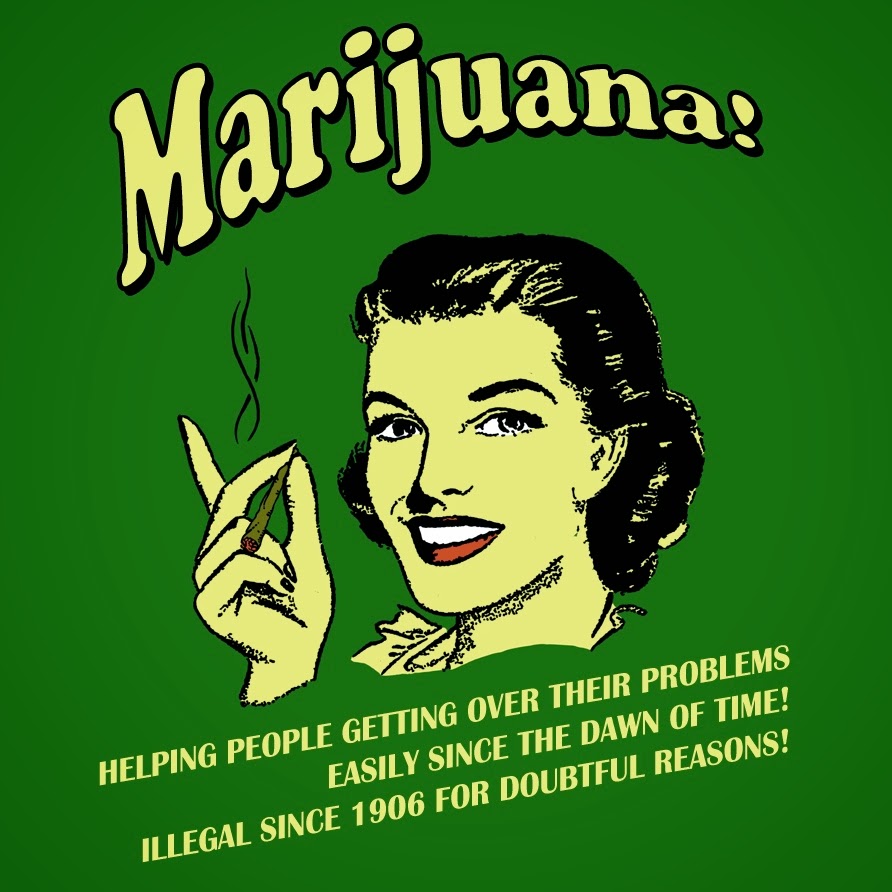 Drizzling rain and chilly this early Friday on California’s north coast — this bit of thin-wet caught me by surprise as I thought we were suppose to go dry and warm for a few days.
Drizzling rain and chilly this early Friday on California’s north coast — this bit of thin-wet caught me by surprise as I thought we were suppose to go dry and warm for a few days.
However, sunshine is predicted for today sometime, and then good weather until middle of next week.
Interesting piece from the Guardian this morning on cooking with cannabis — beyond the brownie/cookie level and with ‘real’ food. Colorado culinarian Melissa Parks: ‘“As a chef, I take cannabis as seriously as any other ingredient. That means you have to know and work with your supplier. I have a fish guy, a meat guy and a weed guy.”‘
(Illustration found here).
Use of marijuana in medicine has become a major pot factor the last few years, and now pot enhancing food preparation — maybe bud granules as Basil? However, cooking just like with mom’s recipe, ingredient-amounts make-or-break a dish..
Some word-edibles from the Guardian:
Colorado has issued more than 350 edible marijuana licences, but those holding them — for both recreational and medicinal purposes — are light years ahead of the stereotyped stoners baking hash cakes.
High-profile chefs have been drawn to the challenge, including Chris Lanter, owner and head chef of Cache Cache, the top restaurant in America’s glitziest ski resort, Aspen, and Hosea Rosenberg, who won Top Chef, a hit cooking show. The Ganja Kitchen Revolution, a gourmet cookbook by Coloradan chef Jessica Catalano, became an Amazon bestseller when the state first legalised marijuana, and is now the go-to book for aspiring cannabis chefs.
“From a chef’s point of view, cannabis should be placed in the same bracket as basil, sage or rosemary,” Catalano says as she prepares for a cannabis-infused dinner party at her home, a converted firehouse in the mountain town of Silverthorne.
“It’s a fascinating herb with multiple flavour profiles.”
Catalano, like other professionally trained chefs using cannabis as an ingredient, selects her strains extremely carefully. Within the two major marijuana groups — uplifting sativas and the more calming indicas — there are a wealth of different tastes to harness.
Today, she’s cooking with one of her favourite strains, super lemon haze, a sativa with sweet floral notes.
“It tastes a little like candied lemon when it’s activated,” Catalano says.
“This strain goes particularly well with scallops, but also tomatoes, basil and balsamic vinegar, which I’m using today.”
Further off the kitchen table — financially, cannabis is cooking:
It’s hard to argue with that when you consider the fiscal benefit to the state.
In the last tax year, Colorado collected $88.2m (£61m) revenue from cannabis sales, according to the Marijuana Enforcement Division’s annual report.
Those figures included nearly 5m marijuana-infused edibles sold, not to mention some 70,000kg of plants.
The Washington Post predicts that more than $1bn will be spent on cannabis in Colorado this year, generating nearly $100m in taxes.
In a state made famous for its frenetic gold rush in the mid-19th century, the green rush is on.
Personally for me in my 40+-years of pot history, marijuana off the bud has never worked. I can’t handle cookies, brownies. or any type edible — bong, pipe, joint, only way I can fly.
Even if prepared by ‘experts,’ all the marijuana side-dishes I’ve tried over time — and there’s been more-than-a-few — my system makes the experience not pleasurable. Usually creates lethargic sensations not cool.
Yet cooking as recipe ingredients beyond the cookie/brownie level appears more ‘normal’ and controllable.
In looking further into this, I spied a most-helpful piece at Vice from a couple of weeks ago and an explanation from the “the Julia Child of weed” — and his new book, “The 420 Gourmet: The Elevated Art of Cannabis Cuisine.”
An interesting read on the subject, the use of cannabis in food preparation is the same as all the others. So much of this, so much of that, and with pot, in the ‘dosing.’
And this reflects to my experience with edibles:
The bigger issue is having too much THC, because if you have too much of that, the negative effects are pretty pronounced — you’ll have anxiety, you’ll get paranoid, you’ll feel horrible, get nauseous, throw up, and then the next day you’ll feel hungover and know you had a really bad experience.
You don’t want that.
You have to know the percentage you’re starting with, and then you have to know how that nets out in the butter or oil that you infuse it into.
Generally called competent/professional cooking…amplified by the pipe nearby.